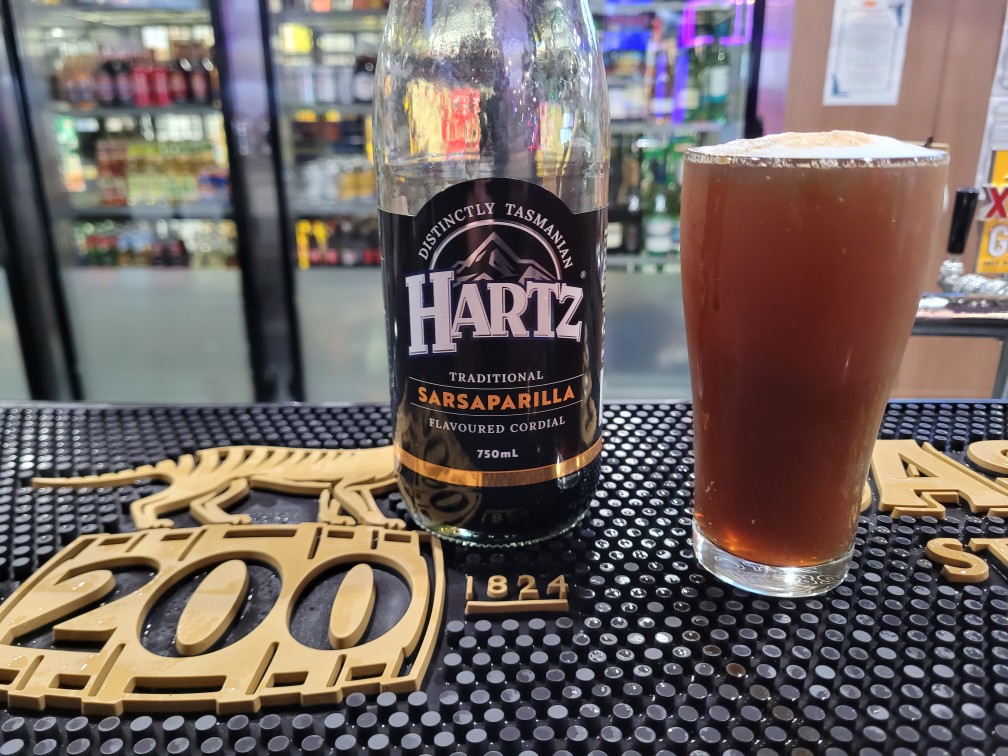
The unlikely combination of a beer and sarsaparilla is a popular mix in Tasmania and Queensland – true story. Photo: Supplied.
“I’ll have a beer and sars please bartender …”
The blank stare I got in return from the barman at the Shellharbour establishment told me I had clearly not enunciated my words or had spoken in a foreign language. I tried again.
“A beer and sars?”
The look on the bartender’s face moved from blank stare to a look of concern for the person on the other side of the bar.
“You know, a beer with a dash of sarsaparilla?” I offered helplessly.
Now this bartender was not a young bloke, he looked reasonably seasoned in the pub game, but still gave me nothing in return so it was time to relent.
“Just a schooner will do thanks mate …,” I relented.
It was only at that point I realised there may be people living and walking on God’s given earth that have not experienced the wonders of this magical combination.
So what is a beer and sars?
It’s exactly what it sounds like. A beer with a dash of the cordial liquid sarsaparilla. Not root beer. Sarsaparilla.
A “beer and sars” is for someone who wants the sophistication of a cocktail served in a stubby or a schooner glass.
Now before you jump to be judgmental, remember Australia has a long history of pairing unusual things to create exquisite culinary adventures.
Like fairy bread.
Or Vegemite spaghetti. Or Vegemite with anything for that matter.
Growing up in Tasmania it would be unusual to walk into a pub and not see someone, particularly earlier in the day, shaking off yesterday’s cobwebs and indulging in a beer and sars.
I’m quietly confident I could walk into any Tasmanian pub today and successfully ask for one, but granted it was more the drink of an older generation.
And since the Shellharbour knockback, a bit of online research has suggested it perhaps wasn’t as common a drink as first thought, seemingly largely located mostly in Tasmania and regional Queensland. Figures.
Sarsaparilla is often confused by the uninitiated as the Americanised root beer, but it is indeed different despite the similar flavour. Sars is traditionally made from the root of the smilax ornata plant, a tropical vine. It has a more natural, earthy and slightly bitter taste.
In the 19th century it was used as a cure-all for any ailment and certainly a dash in a good, cold beer can certainly go a long way to curing a few ills.
And putting a mixer in beer isn’t really that unusual when you think about it. Obviously the most common being the good ol’ shandy – beer with a dash of lemonade.
Yet around the world there are some celebrated combos which make the Tasmanian-Queensland concoction look quite tame in comparison.
In Mexico they have beer and michelada which combines beer with tomato and lime juice and some spices.
If that doesn’t make you spew a little in your mouth, how about a pickleback? Which is exactly what it sounds like – beer and pickle juice.
Or you could take a trip to certain parts of Canada where Caesar beer is a thing.
“Caesar beer?” I hear you say. “That sounds exquisite.”
Well, et tu Brute. Hold onto your hops because before you go rushing in for a Caesar beer, you might like to understand it is a combination of beer and “Clamato” … yep, a unique blend of tomato and clam broth. Dear God.
In comparison, the promise of a beer with a dash of sars sounds far more palatable, right?
In fact I’d go as far to label a “beer and sars” as a party for your mouth.
While I don’t suggest you try and order one at your local, grab yourself a bottle of sars (you will most likely have to order online) and give it a go this summer.
I promise you, you won’t be disappointed.


















